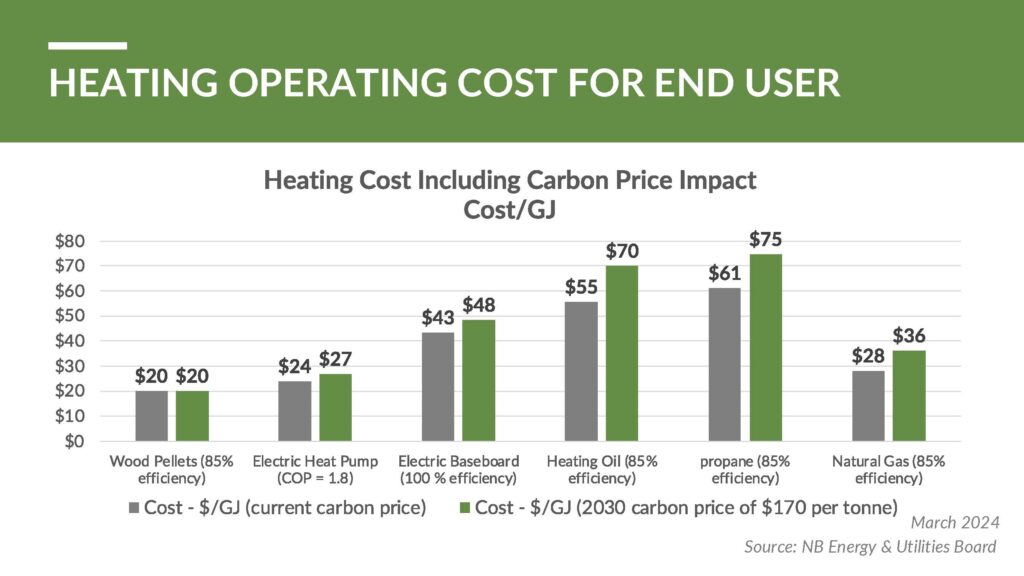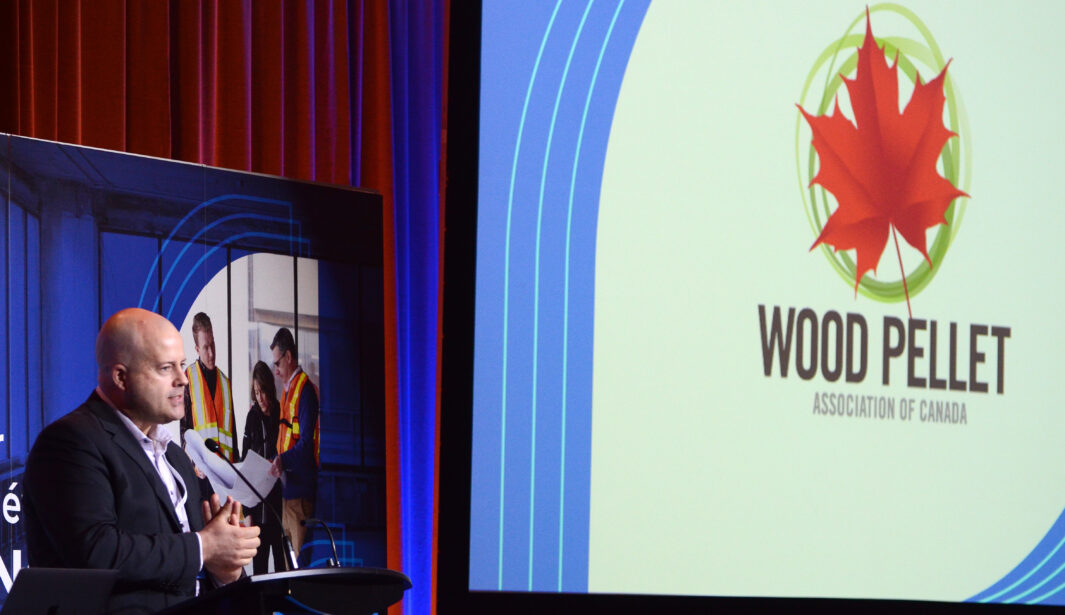Transforming wood waste into versatile wood pellets makes sense for Canada’s forest industry, the local and national economy and a world that needs clean, dependable energy.
It’s been a busy time delivering news about biomass energy. In May, I represented the Wood Pellet Association of Canada at the Energizing Efficiency conference held in Fredericton, New Brunswick, delivered the webinar Driving Decarbonization and Cost Savings with Bio-heat during Bioheat Week and was a featured guest on the Reimagined Energy podcast.
The Power of Pellets
Pellets are a reliable and inexpensive source of energy for Canadians that can help with our heating needs. Rising energy costs mean wood pellet heat is competitive with heat pumps, cheaper than baseboard heating and less than oil and propane.

Electricity is precious. In Canada, we do not have enough to address the needs of the future. The increase in population, growth of industry, and popularity of electric vehicles are all putting demands on our electrical grid.
Bioheat is an on-demand form of energy that can help alleviate pressure on the electrical grid. Wood pellets are like a mini battery. The energy stored in that little piece of wood can be used when you need it. Commercial biomass heating solutions are available for schools, churches and government buildings. And retrofits of existing hot water boiler systems are usually straightforward.
Canada’s pellet mills produce 4.8 million tonnes of pellets annually, enough volume to displace 2.16 billion litres of oil. There are now pellet production facilities in almost every province in Canada.
Proven Technology
We’re not inventing something new. This has been proven elsewhere. Europe uses biomass and Asia has come online. Canada exports 90 per cent of pellet production to these areas, leaving about 10 per cent of our total production to be used here at home.
In Austria, 34 per cent of space heating is from biomass—it’s twice as popular as heat pumps. And in Japan, wood pellets are being used to support the country’s energy policy, guided by principles of energy security, economic efficiency and environmental sustainability.
Here at home, Canada’s far north is a region with biomass growth. Biomass is one of the main sources of primary energy in public buildings in Yellowknife, with 33 per cent of city territorial government buildings heated with wood pellets. Residents are also adding biomass heating to their homes to lower costs and reduce greenhouse gas emissions.
Biomass: Part of a Well-Managed Forest

Forests are one of Canada’s greatest resources, but our timberlands are under pressure from the effects of climate change, including wildfires and insect infestation. Trees damaged by fire and insects can be used for wood pellet production, helping remove harvest waste and making the forest more resilient to natural disasters.
In Canada, we need to recover more forest remnants, more wood damaged by fire or insects, and more low-grade wood that would otherwise be left in the forest.
In British Columbia, Central Chilcotin Rehabilitation Ltd. (CCR), a joint venture between Tŝideldel First Nation and Tl’etinqox Government, has led transformative forest rehabilitation efforts, harvesting biomass from wildfire stands and replanting the forest.
A managed forest can help reduce emissions and provide essential heat. Today, Sweden is growing 40 per cent more forest than 40 years ago because it has a large biomass market.
What We Need to Do in Canada
Governments need to develop solutions to encourage consumers and commercial enterprises to switch to bioheat. We need to develop a thermal energy strategy that includes bioheat, provide financial support for installations, accelerate public building procurement for bioheat, and fund feasibility studies for fuel switching and district energy. If more consumers used bioheat, higher polluting and less efficient thermal electrical generation could be reduced.
Canadian electrical utilities should explore cogeneration opportunities to optimize energy utilization at thermal plants. A growing trend in Europe is combined heat and power (CHP) biofuel facilities located near thermal units to capture residual energy after turbine generation.
If we used district heating systems, in which all the hot water from thermal biomass electrical plants is routed through a network that heats homes, industries and other buildings, the efficiency would double.
‘Little Batteries’ an Ideal Fuel
The simplicity of wood pellets is what makes them an ideal fuel—compressed wood fibre with no additives. The only byproduct of wood pellet heating, ash, is an amazing fertilizer.
If you have a piece of ground with poor soil quality, put some ash on it. You will be amazed to see the difference. Nothing is being wasted from burning biomass; it’s a full cycle.
Jonathan Levesque is the General Manager of Biomass Solution Biomasse, a WPAC member. Jonathan sits on the WPAC Board.

